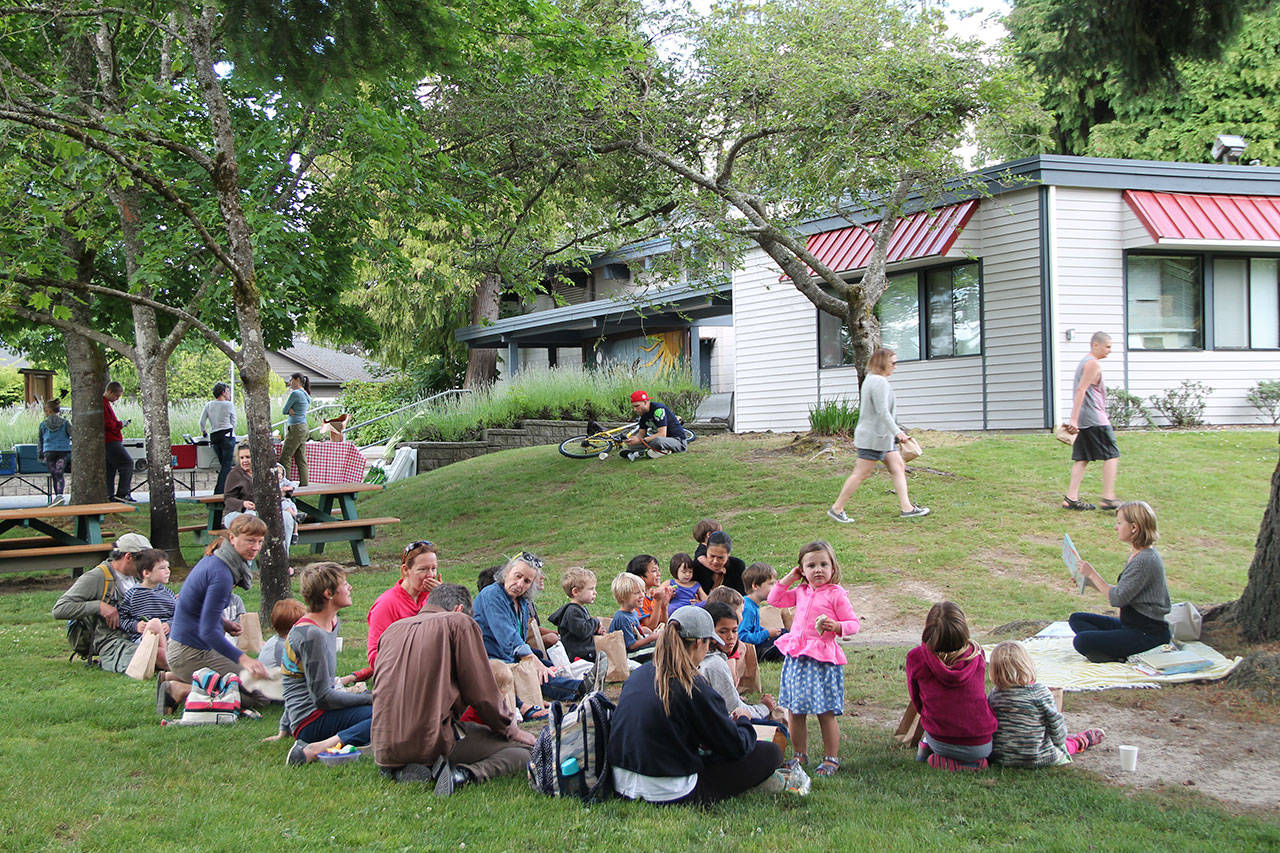This summer, island children practiced yoga with a volunteer instructor at Ober Park. On another day, they watched an outdoor puppet show. There was face painting, and on Thursdays, the library even gave away books to read.
The Vashon Community Food Bank’s Picnics in the Park program — free and open to all — has grown considerably in the six years since it began. Today, the organization continues to host a number of fun activities in Ober Park while providing nutritious meals throughout the summer months for island children who may not have access to healthy food when school lets out.
But Executive Director Emily Scott said plans for the program’s future depend on additional support from the community.
Picnics in the Park was started to address a worrying shortfall: More than 20% of students in Vashon schools qualify for free and reduced lunch, but that number is not high enough for the island to receive support from the federal Summer Food Service Program.
Scott said research shows that children’s summer learning loss is exacerbated when students go without healthy food during the months outside of school, leading to potential academic challenges in the fall that set them back.
That can impact low-income families — already struggling with meals — the hardest. But Scott said there is an advantage stemming from the program’s independence: Because it isn’t reliant on funds from the government, the food bank can tailor Picnics in the Park to better serve the community’s needs.
“We’re at the point for it to be sustained and for it to grow,” she said, adding that the food bank would like to host the program in different locations to reach as many islanders as possible. “But for that kind of increased access and growth, we need increased funding.”
The Picnics in the Park program is supported by island business sponsorships and private donations. According to Scott, this year, the business community reached deep and gave $12,000. The myriad expenses the food bank incurs for the program range from staffing to the cost of food and vehicle fuel, but she noted that the assistance goes far.
Last year, the program served over 5,200 lunches to more than 570 children and youth. The average daily attendance this summer was 119 — that number barely hovered above 40 when the program was first started in 2013.
Scott said 47 volunteers devoted an average of 75 hours a week to the program Monday to Friday. Some already give back to the community, affiliated with different organizations that collaborate with the food bank to help set up, lead activities or distribute lunches and snacks.
Others are students themselves, logging their own community service hours and seeking letters of recommendation. Parents and grandparents consistently give their time, and Scott said that Chase Bank, Windemere and John L. Scott have sent volunteers on rotating afternoons as well.
“Even though it’s truncated to the summer, it really is our most volunteer-intensive program,” said Scott.
She added that while scheduling conflicts can occasionally arise, this summer was a breeze.
Lunch for the children consists of several choices, usually between peanut butter and jelly or meat and cheese sandwiches. There are also bagels with cream cheese, and for those with dietary restrictions, gluten-free crackers and hummus. Assorted fruits and vegetables, applesauce, string cheese and yogurt round out the daily menu.
Scott said the food bank would like to be as responsive to community requests as possible. They use some plastic bags to give out wet vegetable snacks but have mostly eliminated single-use plastics, opting for paper bags or other compostable containers.
“We’re really working toward reducing waste, which is tricky because food service is incredibly wasteful,” she said. “We know there’s community interest in reducing waste entirely, but with more community support, we can be more responsive to that interest.”
Food that is perishable and not eaten goes to the community meals program at the Vashon Lutheran Church. Scott added that the food bank has deepened its partnership with the Vashon Library and occasionally has been able to fill an extra cooler with treats for sixth through 12th graders to munch on during popular Game On! events.
Serving teens is another way Scott said the food bank would like to expand its reach with the program, getting fresh food to where they already are, such as the Burton Adventure Recreation Center and skate park. That was not possible this year.
“But we have high hopes,” she said.
Islander Owen Brenno, the program coordinator, noted that the food bank serves 250 households per week with grocery distribution. He said it was important for him to give back to the island, recalling the support he received from the community growing up as a student-athlete.
“The thing that stood out to me this summer is how much this brings the community together, how kids who might not see each other [until school starts] can come together and eat a nutritious lunch,” he said. “Making kids happy feels nice.”
For more information, visit vashonfoodbank.org.



